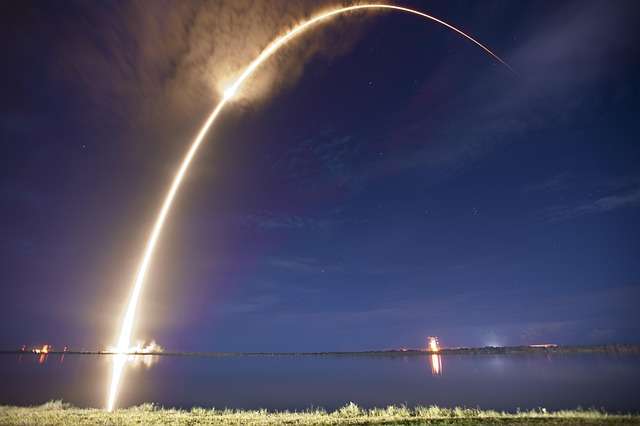In a move that has captured global attention, Iran has unveiled a sophisticated underground cruise missile base, signaling a major leap in the country’s military capabilities. This strategic military advancement features the Qadr 380 missile, a weapon designed to reshape the balance of power in the Middle East.
With its advanced anti-jamming technology and precision targeting system, the Qadr 380 is set to have profound implications for regional security dynamics. This article explores the technical advancements, geopolitical significance, and potential global ramifications of Iran’s latest missile technology.
Unveiling Iran’s Hidden Power
Located on Iran’s southern coastline, this underground facility houses hundreds of Qadr 380 cruise missiles, capable of striking targets over 1,000 km away. Unlike traditional missile systems, the Qadr 380 incorporates cutting-edge anti-jamming technology, making it one of the most sophisticated weapons in Iran’s arsenal.
The missile’s launch from an underground base ensures that it remains protected from potential preemptive strikes, enhancing its operational readiness while reducing detection risks.
The Strategic Significance of the Qadr 380
The Qadr 380 missile represents more than just a technical achievement—it is a symbol of Iran’s commitment to strengthening its defense capabilities and asserting its position in the regional security landscape.
IRGC Commander Hossein Salami emphasized the strategic importance of the missile system, stating that the unveiling of the base is intended to “increase the accuracy of the enemy’s calculations about Iran’s power”. This statement highlights Iran’s goal to establish a strong deterrent, signaling that its military might cannot be underestimated.
The underground base is especially significant given its proximity to the critical Persian Gulf, one of the world’s most vital maritime trade routes. The base’s location allows Iran to potentially disrupt naval operations in the region, should tensions escalate.
It also represents a shift in military tactics, moving away from traditional surface-based missile systems to more stealthy and resilient underground installations.
Advanced Technology: The Key to Qadr 380’s Superiority
At the heart of the Qadr 380 missile is its advanced guidance system, which includes controlled reception patent antenna (CRPA) arrays and digital beam-forming algorithms. These systems allow the missile to maintain precise navigation, even in environments with high levels of electronic interference. This capability sets the Qadr 380 apart from conventional missiles, which are often vulnerable to jamming and other countermeasures.

By implementing these anti-jamming technologies, Iran has demonstrated its ability to challenge conventional electronic warfare techniques and create defense systems that can counter advanced tracking systems used by its adversaries.
The missile’s ability to operate in high-interference environments suggests that it is designed to overcome modern electronic warfare strategies employed by both regional and global powers.
Geopolitical Implications: A New Era of Military Strategy
The unveiling of Iran’s Qadr 380 missile comes amid growing diplomatic tensions with the West, particularly surrounding Iran’s nuclear program and its regional military activities. Experts suggest that this missile base is a carefully orchestrated move to enhance Iran’s deterrence capability while also gaining leverage in diplomatic negotiations.
The base’s strategic location and advanced capabilities provide Iran with a potent tool to challenge adversaries in the region, including the United States and its allies.
International observers are closely monitoring the situation, as the Qadr 380 missile’s extended range and precision targeting could significantly alter military calculations. With its ability to disrupt naval and air operations, this missile is not only a defensive measure but also a powerful strategic tool in a region defined by instability and shifting alliances.
Implications for Global Security
As Iran strengthens its defense systems, the global community is left to assess the broader implications for regional and international security. The Qadr 380 missile, with its advanced technology and range, represents a shift in the balance of power in the Middle East.
For Iran, the missile is part of a broader strategy to assert its sovereignty, develop indigenous military technologies, and challenge traditional assumptions about its military capabilities.
The base’s unveiling signals to the world that Iran is not only willing to defend its interests but is also capable of developing world-class military technologies. As tensions continue to rise in the region, the Qadr 380 missile is likely to be a focal point in future geopolitical discussions.
Conclusion: Iran’s Military Evolution and Future Prospects
The Qadr 380 missile marks a pivotal moment in Iran’s military evolution, demonstrating both its growing technological prowess and its strategic resolve. This advanced weapon system is not just a technological marvel but a statement of Iran’s commitment to securing its position in an increasingly volatile region.
As military observers and policymakers continue to analyze the potential effects of this new missile, one thing is clear: Iran is no longer just a regional player—it is a formidable force on the global stage.
For more in-depth coverage of military advancements and their implications for global security, stay tuned to Documentary Times.